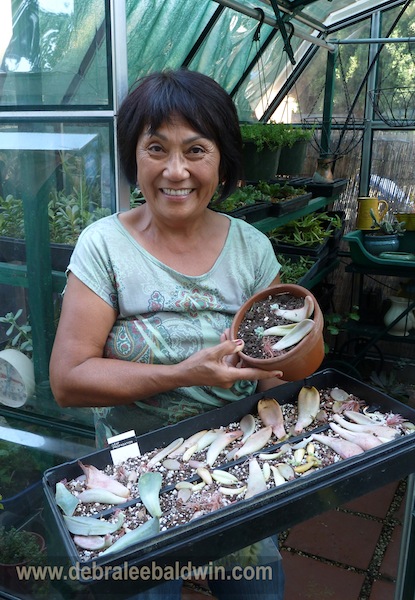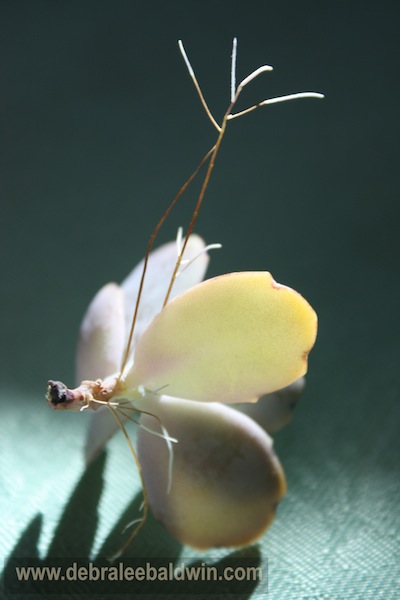If leaves pop off a succulent readily, that’s a clue that those leaves probably are capable of generating roots and new little plants. Like these of Sedum rubrotinctum ‘Aurora’.

Notice how the original leaf has wrinkled as its life-giving fluids have gone into leaf and root production? I love the beadlike quality of the new little leaves, and the way the original leaf contains everything needed to create life. Interesting, too, that where the leaf was attached to the stem, the cellular tissue can form both leaves and roots.Graptoveria ‘Fred Ives’ also has leaves that fall off easily, the better to take root and form new plants. Isn’t it interesting that the roots of the sedum are white, and those of the graptoveria (below) are rose-red?

If you want to propagate succulent leaves, fill a nursery tray with friable soil and lay them on top. You want to try and replicate what happens in nature: The leaves land beneath the plant, and therefore are sheltered from hot sun. They’re NOT buried, and if too wet, they may rot. Here, San Jose Master Gardener Laura Balaoro shows a tray full of leaves she’s using for propagation.

When it comes to propagating succulents in general, I’ve had more consistent results with cuttings. Where leaves once were attached to the stem, new roots will form. So be sure you bury that all-important meristem tissue.

It’s been my casual observation that sedums, graptoverias, pachyphytums, pachyverias and graptopetalums dependably produce new plants from fallen leaves (they also can be propagated from cuttings as well). Succulents that are more shrub-like and branching (like jade) don’t seem to do it as readily. And succulents that produce pups or offsets (like sempervivums, aloes and agaves) don’t do it at all. Has this been your experience?
In a future post, I’ll show succulents within a fascinating subset of the genus Kalanchoe: bryophyllums. These produce miniatures of the mother plant along leaf edges or tips. These plantlets eventually fall off and take root.
